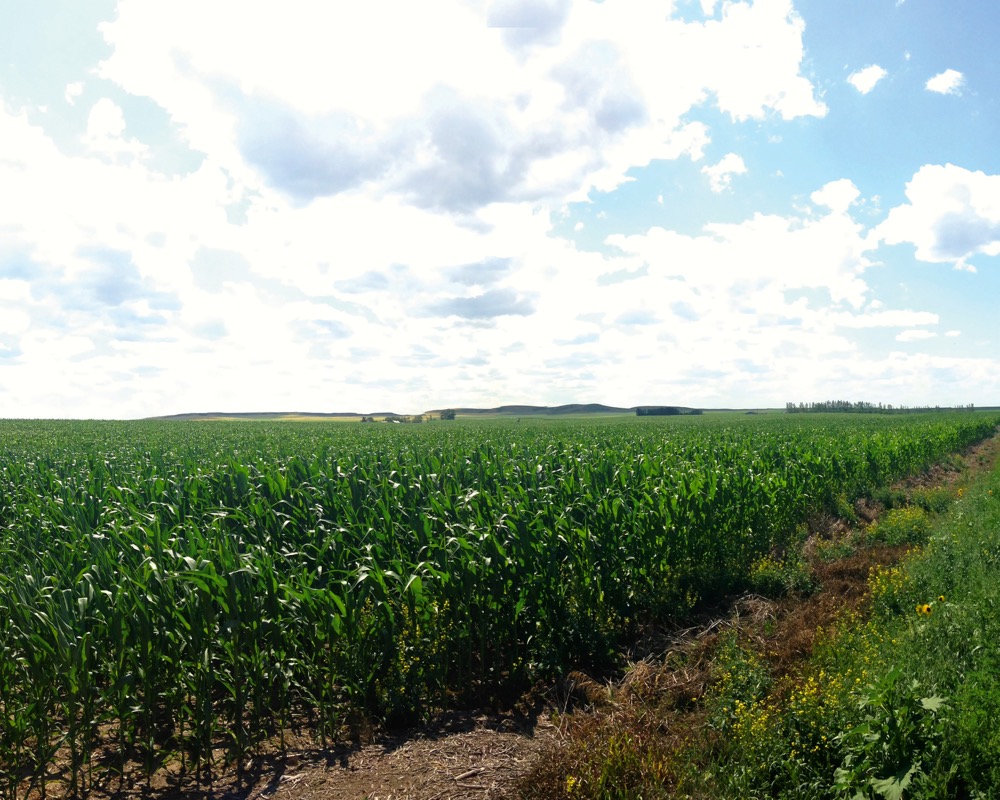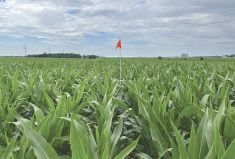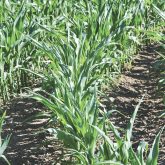Which has to come first, the acreage, or the market to justify it? That’s exactly the chicken-or-egg, catch-22 sort of situation that farmers on the Prairies have found themselves in repeatedly in past years as their cropping options have changed.
First it was the canola revolution of the 1970s and ’80s which made Canada into the world power in healthy rapeseed oil, complete with its own unique take on the oil profile of the crop. Then there was the pulse crop explosion just a few years later that suddenly saw lentils and chickpeas become a realistic alternative.
Read Also

Sensing the soil: Root cell research finds ‘stress hormone’
Research into how root cells react to soil stressors could help plants better adapt to changes in their climate.
Now, with industry lining up to promote grain corn for the region and talking of targets as big as 10 million acres, growers are faced with perhaps the ultimate irony. One of the most widely grown crops throughout the world is, in the western Canadian context, just another specialty crop without markets or infrastructure.
Market analyst Frank Letkeman, of Winnipeg’s Ag-Chieve grain market advisory service, says he appreciates the irony, but nobody should be terribly surprised by the impasse.
“This sort of thing happens every time we see a new crop emerge in the region,” Letkeman says. “We are an exporting region and we don’t ever have markets large enough to consume our production domestically — but developing those international markets can take time, and to do it, you need to have the product.”
It’s not that the crop is a totally unfamiliar one in the region. It’s long been produced in Manitoba’s Red River Valley and under irrigation in a few pockets of southern Alberta. But now it’s starting to creep out of the cradle and pop up in places like southern Saskatchewan, where it’s been virtually unknown.
In no small part that’s being driven by shorter-season hybrids bred specifically for the area that require fewer corn heat units.
The latest ones come in at around 2100 CHU, which opens the door to vast swaths of the Prairies, not to mention the major recent investments by ag companies like Monsanto and DuPont/Pioneer that suggest even shorter-season varieties are just a matter of time. But Letkeman cautions that it won’t be as simple as just getting the requirements for CHU down in this heat- and moisture-loving crop.
“There’s also the question of reliable rainfall,” Letkeman says. “This is a crop that definitely needs moisture to reach its full potential.”
That suggests that the drier portions of the Prairies might not be suited for non-irrigated production, and the shorter-season northern areas are always likely to be better wheat, barley and canola country rather than corn-soy ground. Then there’s the on-farm infrastructure problem. Unlike soybeans, it’s still an open question whether corn can be adapted to solid seeding with the ubiquitous air seeder, or whether it will remain a row crop. So far nobody’s recommending sowing with an air seeder, though some are beginning to experiment with it.
Other on-farm infrastructure challenges remain as well, mainly in the area of farm equipment. Planters are north of $200,000, corn headers will be in the $100,000 neighbourhood and then there’s the question of handling the corn after it’s harvested. Right now the current varieties come off wet — in the high 20 per cent range, and even up into the low 30s, and it won’t store safely until it hits about 15 per cent.
“There are a lot of farmers who, if they want to seriously grow corn, will need to buy a grain dryer,” Letkeman says.
Here again another small irony emerges. Grain dryers are a reasonably common sight on farms in the region, but growers in the southern Prairies, where corn seems to be best suited, are the least likley to have them. They’re much more likely to see their crops dry reliably in the field, and therefore have forgone this expense, whereas growers in parts north have been forced by the reality of a perennially short season to make this investment.
“That’s a challenge for farmers — right now growing corn does seem to require more specialized equipment and management,” Letkeman says. “I think that may limit acres for a while.”
Another thing that could give potential corn growers sticker shock is the cost of inputs. Corn is a higher user of nitrogen and phosphate than crops traditionally grown in Western Canada, and given that the practice of planting it is also a bit riskier, some growers may hesitate to give it a try. Offsetting that, however, is greater productivity and therefore potentially higher returns.
It is, Letkeman says, the eternal challenge of farmers learning and adopting a new crop. Techniques from other areas aren’t necessarily going to transfer straight across to the new growing area, and therefore there’s going to be a learning curve.
“We see this period of trial and error with every new crop,” Letkeman says.
As the kinks get ironed out, acres will come, and the production from those acres will begin climbing and growers will really dial in on corn. That’s when marketing will become a challenge, since currently domestic animal feeders are showing enough interest in corn to keep demand healthy for the relatively small amount produced. As recently as this spring, the farm press was suggesting that demand was outstripping supply, keeping prices healthy — but Letkeman doesn’t think that will last when production starts to seriously climb. However, he’s also confident that the region’s grain companies are set to rise to the challenge, though it may take a bit of time and see a few growing pains.
“I do think that the grain companies — organizations like Viterra and Richardsons — are beginning to develop these global export markets that we’ll need in the long term,” Letkeman says. “In the end most of this crop will wind up going offshore, or even just down to the U.S. — but it will be exported.”
Letkeman says this developmental work will have to happen, because reputation is everything in the global grain market and it will take time to convince buyers that the crop is more than a flash in the pan or one-off.
“It’s going to take time to develop the market for this crop, for Canada to be seen as a ‘go-to’ place for corn,” Letkeman says. “We just haven’t grown enough of it in the past to have developed that reputation yet.”
If industry production targets are going to be met, however, that market development is going to have to come very quickly. Currently about half a million acres of corn are being planted, meaning hitting 10 million acres by 2025 is going to see nearly a million acres a year added, though of course the progress won’t likely be linear. Instead a tipping point will be reached and acreage will suddenly jump.
This article first appeared in the September 2015 issue of the Corn Guide.
















